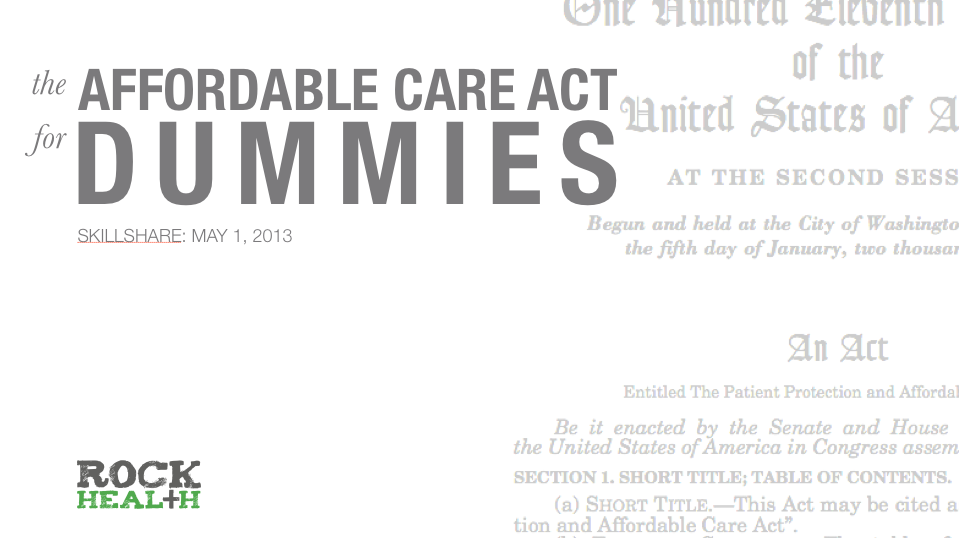The Affordable Care Act for Dummies
Beginning in 2014, the U.S. will implement the most far-reaching Affordable Care Act provisions. At our latest Skillshare class (see slides below), Malay Gandhi broke down some of its major themes and features; describing the move from a treatment-centered model toward more preventive care and ultimately paying providers for health outcomes—not just health procedures.
-
Despite gaining a larger customer base through mandated insurance coverage, the power shifts away from insurance companies who may no longer selectively choose customers, profit without limit, or cut off benefits by placing “maximum limits” on plans.
-
Beginning in 2014, customers should be able to easily compare healthcare plans, (which must provide a certain level of coverage), are guaranteed eligibility, and will have more responsibility for their healthcare choices.
The Affordable Care Act upends entrenched business models of healthcare and fosters opportunities for new visionaries to enter and re-shape the system. With fixed payments for providing services to a population, hospitals and providers are incentivized to invest in prevention, efficiency and minimization of unnecessary procedures and administration. Insurers, now capped on margin, must also find ways to be more efficient. And employers will be forced to sort through the economics of being the primary source of coverage for most Americans. How are some companies embracing and taking advantage of these changes?
-
Benefitter works with employers to help them navigate healthcare reform.
-
Clinicast develops data analytics and workflow tools to help at-risk healthcare organizations improve outcomes and lower costs.
-
Eligible provides consumers with up-to-date insurance coverage information for specific procedures—helping companies comply with a new Affordable Care Act provision for simplifying the administration of healthcare.
-
Wellframe helps track high risk patients and prevent unnecessary and expensive hospital readmissions.
